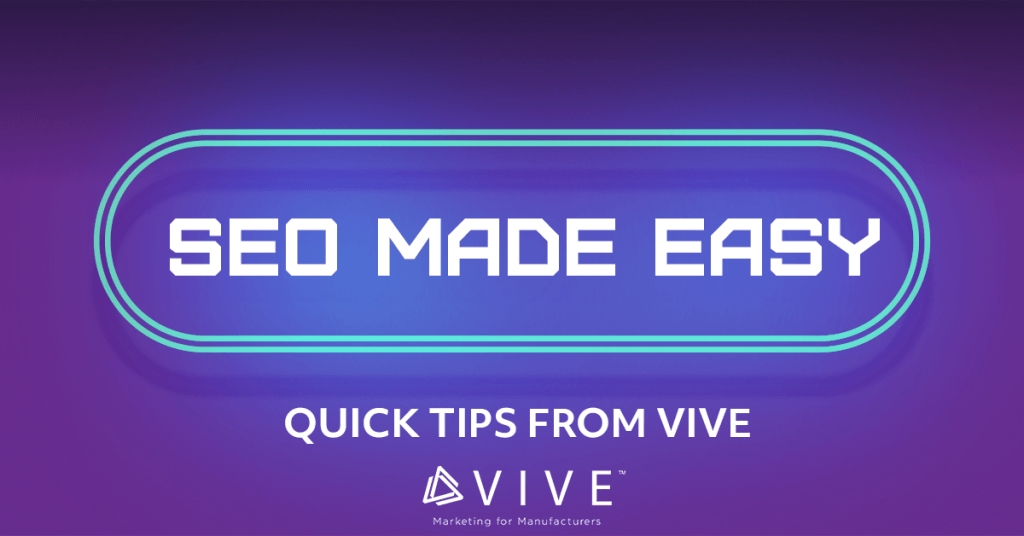SEO Made Easy — Quick Tips From Vive
Are you adding new pages to your website and using the H1-H3 header tags as a style choice for design? What about not using the H1 tag because it doesn’t look right on the page? STOP IT! This is a common mistake people make because it’s an easy (but wrong) solution to managing the appearance of how text is displayed on your page.
Believe it or not, these tags are bits of HTML code that represent and convey important information to search engine crawlers that visit your site. If they see a page with no H1 or even multiple H1’s on a single page, they don’t like it. In fact, this is considered bad onsite SEO!
Solution: Instead of using H1-H3 as a style choice, you should have a conversation with your web developer team (or whoever is in charge of the appearance of your website) and discuss updating your theme, or by looking at the style sheets tools within you CMS.
Use these header tags as they are intended to be used — sequentially.
- H1 = These are exclusively used for your on-page title. ONLY use 1 per page and ALWAYS use this for each page.
- H2 = Think of H2’s like chapters in the table of contents in a book. Multiples are fine and should help to break up the content of your page into easy to read, digestible bits of information. Remember writing research and essay reports back in school? Yeah. Like that.
- H3 = not always needed on each page, but if you are using them, they should be used like subsections within a specific chapter that supports the theme/concept topic of the H2.
Best practice SEO is meant to help search engines both ‘see’ and index your site as accurately as possible. Help them help your website get in front of as many relevant users (aka people) as possible.
Do this and you’re on your way to better onsite SEO!
Want to learn more about how to improve your onsite SEO? Contact Vive Marketing to schedule an SEO review analysis today!


